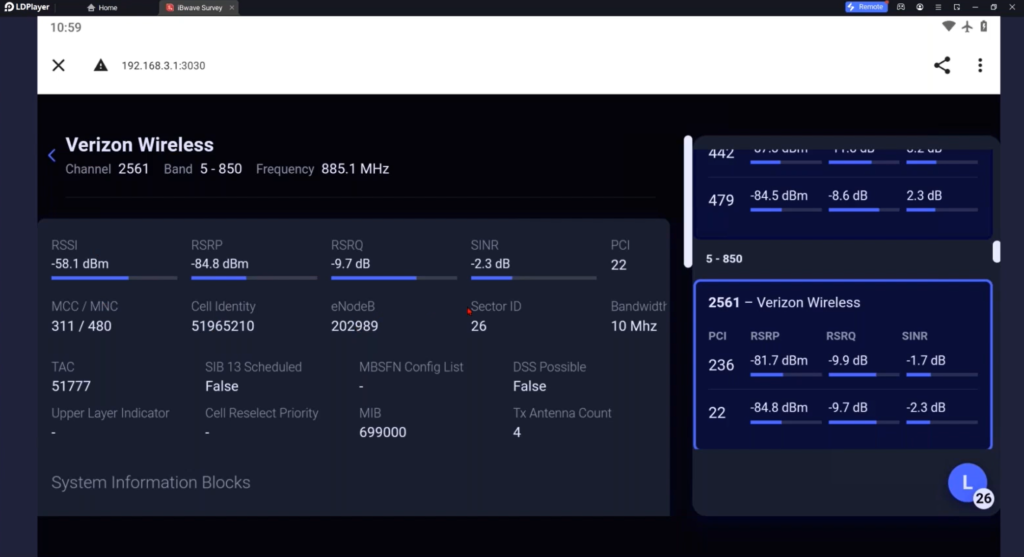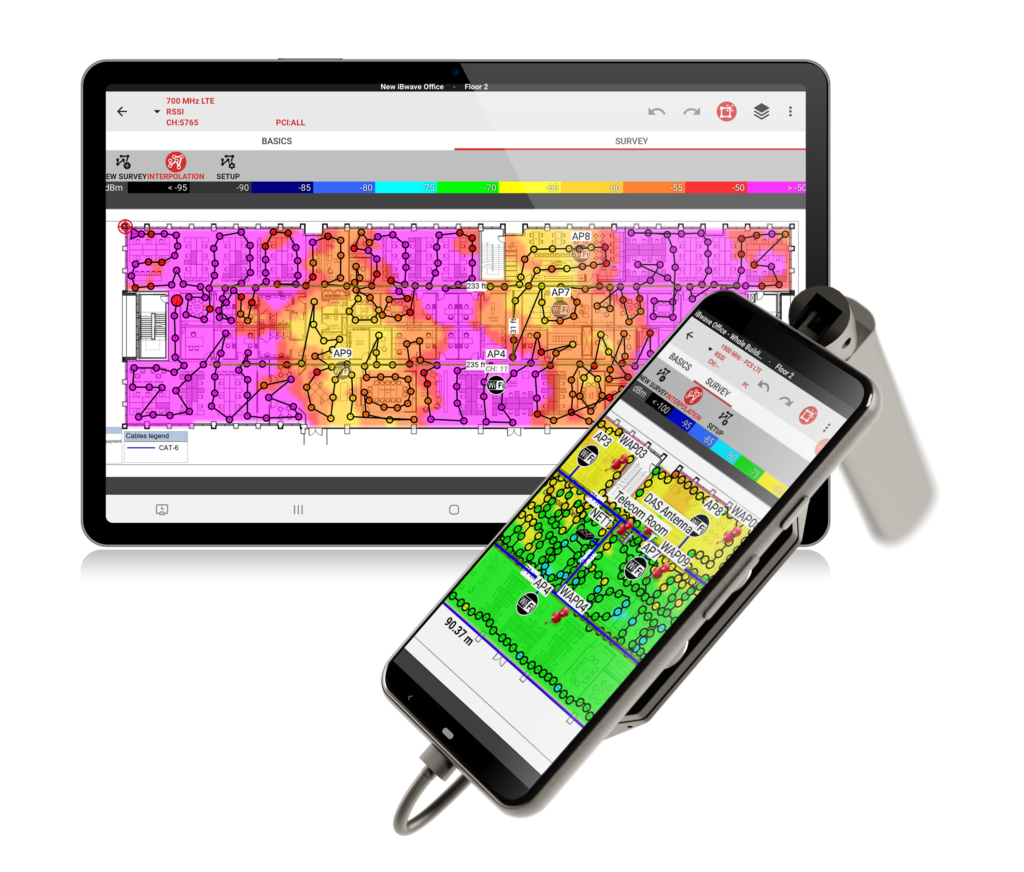How To Survey 5G and LTE Networks Efficiently: Stepping Beyond Network Testing
Share

Wireless networks, especially LTE and 5G, play a pivotal role in our increasingly connected world. Efficient surveying and testing of these networks is essential for optimal performance and reliability. This article explores the key benefits, challenges, and strategies for mastering effective wireless network surveying, with a focus on simplicity and cost-effectiveness.
1. Why We Survey 5G and LTE Networks
5G and LTE network surveying serves as an indispensable requirement for several reasons. It contributes to the optimization of network performance by providing insights into signal strength, coverage areas, and potential interference, allowing engineers to enhance overall network efficiency. Additionally, it plays a crucial role in troubleshooting and maintenance, enabling proactive identification and resolution of network issues, and minimizing downtime.
Capacity planning is another critical aspect where LTE and 5G surveying shines. It helps determine network performance in areas with potential high capacity, allowing for optimal resource allocation and meeting the growing demand. Moreover, network surveying offers valuable insights during the initial design phase, post-installation validation, and subsequent expansion projects, while ensuring precise planning and efficient use of resources.
2. Key Benefits of Network Surveying
a. Network Performance Optimization: Network surveys verify signal strength and coverage and identify interference, ensuring a seamless user experience. By collecting key data, wireless engineers optimize network performance.
b. Troubleshooting and Maintenance: Regular surveys proactively address network issues like signal degradation, interference challenges, and coverage gaps, minimizing downtime and extending infrastructure lifespan.
c. Efficient Capacity Planning: Survey data is foundational for efficient capacity planning in high-density areas, managing handoff zones, and optimizing resources to meet growing demand effectively.
d. Streamlined Network Design and Expansion: Network surveying offers insights from design to expansion, ensuring precise planning and efficient resource utilization. This streamlined approach contributes to successful initiatives and minimizes change orders from equipment placement to address dominance over macro coverage and poor overlap zones.
e. Cost Savings and Time Efficiency: Network surveying contributes to significant cost savings and time efficiency by detecting issues early, reducing operational costs, and streamlining processes. This cost-effective approach enhances overall network efficiency. The resolution of network discrepancies increases exponentially the further along the project lifecycle it takes for discovery.
3. Challenges with 5G and LTE Surveying
Conducting surveys for LTE and 5G networks is pivotal for optimal performance and reliability. However, technological advancements bring forth multifaceted challenges that demand attention.
Complexity of Current Solutions: In the dynamic world of wireless network planning, existing tools fall short in complexity as networks evolve. Evolved technologies create a disconnect between solutions, demanding a reassessment of tool suitability and capability.
Operational Hurdles: Beyond technical challenges, operational complexities arise. Navigating new environments, addressing aesthetic challenges, and adapting to evolving demands for various applications add layers of difficulty to effective survey execution.
Heavy and Disjointed Tools: Many available solutions are characterized by their heaviness and lack of cohesion. Cumbersome tools hinder maneuverability, impacting the effectiveness of the test and survey and contributing to challenges faced by field technicians and IT teams.
Financial Implications: The repercussions of using complex disjointed tools extend to financial aspects. Network surveying and testing become more expensive with extensive training requirements and potential errors during operation. Overcoming these challenges necessitates a shift towards simpler, cohesive tools, prioritizing both operational efficiency and cost-effectiveness.
Wireless network survey challenges encompass technical, operational, and financial considerations. Streamlining the survey process involves strategic tool choices, emphasizing simplicity, employing cohesiveness, and empowering field technicians. As connectivity evolves, proactive solutions are necessary to master effective tests and surveys.
4. Mastering Effective Wireless Network Surveying
Achieving proficiency in wireless network surveying and testing involves strategic planning, efficient tools, and insightful analysis. Here is a comprehensive breakdown:
Testing vs Surveying:
Testing the network can be done simply with an end-user device. Verifying the device can access the network, transmit and receive voice or data, and handoff between RF (Radio Frequency) signal sources is testing the network, but it is not enough. Even though end-user devices may be able to display critical key performance indicators (KPIs), capturing that test data for further analysis on a map/floorplan is surveying.
Surveying is only as good as the test data captured, but adding clearly mapped critical area annotations with as much information as is available makes a good survey great. Great surveys create efficiency in the life cycle of the project from design to deployment, ongoing maintenance, and future expansion.
Essential Steps Before the Survey:
Prior to initiating a survey, meticulous preparation is essential. Understanding the deployment environment, the network technology of service, and the end-user device capabilities are critical fundamentals, then identifying potential interference sources and establishing a clear survey plan is foundational. This phase acts as a compass, guiding technicians through the intricacies of the test and survey. It also involves verifying the network design to ensure alignment with the intended deployment goals.
During the Survey:
Optimizing the survey process requires employing lightweight, powerful tools for simultaneous channel scanning. This approach ensures a swift yet comprehensive analysis of active frequencies, providing real-time insights. The emphasis is on empowering field technicians with tools that elevate the survey process strategically. Implementing a blind scan at the beginning of the survey can verify the intended signals and uncover unexpected interference or anomalies, contributing to a more robust process.


Post-Survey Analysis:
The post-survey phase involves a thorough examination of collected data, scrutinizing signal strength, coverage areas, and potential interference. Identifying areas for improvement becomes a strategic roadmap for enhancing network performance. This analysis is not just routine; it is a diagnostic tool ensuring optimal network functioning. Ongoing maintenance checks, including periodic blind scans, are crucial to identifying evolving network challenges and maintaining peak performance.

Efficient Process:
Streamlining the network survey process goes beyond tool selection. It involves seamlessly integrating tools into the workflow, minimizing field setup time, capturing geolocated test and survey notations efficiently, and eliminating post-processing complexities. This comprehensive approach provides instant access to survey data, enhancing overall efficiency. It also incorporates the validation of network designs during and after the survey, ensuring they align with performance objectives.
Mastering effective wireless network evaluation for LTE and 5G demands a comprehensive approach that encompasses meticulous preparation, empowered testing, efficient surveying, insightful analysis, including blind scans, ongoing maintenance checks, and strategic validation of network designs. It is about strategically navigating challenges, saving time, and ensuring optimal network performance in the dynamic landscape of connectivity technologies.
5. How iBwave Helps Streamline 5G and LTE Surveys
When surveying LTE and 5G networks, our easy-to-use app, iBwave Mobile, along with the lightweight and powerful Epiq PRiSM scanner, emerges as the simplest and most cost-effective tool. It enables you to save time and costs thanks to eliminated post-processing, survey multiple technologies at once, and determine interference and active frequencies with a spectrum analyzer.
Elevate your network surveying with iBwave and unlock massive cost and time savings! Learn more about our seamless survey solution here!

You can also watch our full 5G survey demo video below!
Conclusion
Efficient 5G and LTE network surveys are indispensable for maintaining optimal performance and reliability in today’s dynamic connectivity landscape. Embracing simplified survey and test techniques and leveraging advanced tools like iBwave’s solution ensures seamless network design, deployment, and management. As networks evolve, mastering effective surveys requires proactive solutions to overcome challenges, save time, and ensure optimal performance.
- Surveying Industrial and Logistical Private LTE & 5G Networks: All You Need to Know - June 28, 2024
- How To Survey 5G and LTE Networks Efficiently: Stepping Beyond Network Testing - February 8, 2024
- Understanding the Basics of Public Safety Networks - December 12, 2023

















